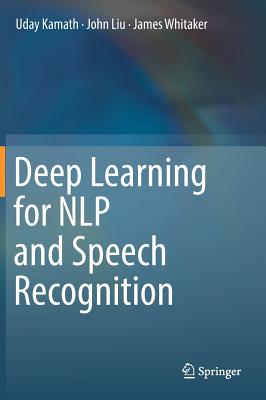Text Entry Systems: Mobility, Accessibility, Universality
暫譯: 文字輸入系統:流動性、可及性、普遍性
I. Scott MacKenzie, Kumiko Tanaka-Ishii
- 出版商: Morgan Kaufmann
- 出版日期: 2007-03-01
- 售價: $2,400
- 貴賓價: 9.5 折 $2,280
- 語言: 英文
- 頁數: 344
- 裝訂: Paperback
- ISBN: 0123735912
- ISBN-13: 9780123735911
-
相關分類:
語音辨識 Speech-recognition
立即出貨 (庫存=1)
買這商品的人也買了...
-
 Java Servlet 程式設計 (Java Servlet Programming, 2/e)
Java Servlet 程式設計 (Java Servlet Programming, 2/e)$900$711 -
 Effective C++ : 55 Specific Ways to Improve Your Programs and Designs, 3/e (Paperback)
Effective C++ : 55 Specific Ways to Improve Your Programs and Designs, 3/e (Paperback)$2,180$2,071 -
 跟 Adobe 徹底研究 Photoshop CS2 (Adobe Photoshop CS2 Classroom in a Book)
跟 Adobe 徹底研究 Photoshop CS2 (Adobe Photoshop CS2 Classroom in a Book)$650$553 -
 鳥哥的 Linux 私房菜基礎學習篇, 2/e
鳥哥的 Linux 私房菜基礎學習篇, 2/e$780$663 -
 CSS、HTML、XHTML 精緻範例辭典
CSS、HTML、XHTML 精緻範例辭典$450$356 -
 次世代─Linux Ubuntu 玩全手冊
次世代─Linux Ubuntu 玩全手冊$580$493 -
 Microsoft PowerPoint 2007 使用手冊
Microsoft PowerPoint 2007 使用手冊$450$356 -
 透視 ASP.NET 2.0:使用 VB, 2/e
透視 ASP.NET 2.0:使用 VB, 2/e$650$514 -
 軟體測試實務講座─來自矽谷的技術經驗與心得分享
軟體測試實務講座─來自矽谷的技術經驗與心得分享$290$226 -
 現代嵌入式系統開發專案實務-菜鳥成長日誌與專案經理的私房菜
現代嵌入式系統開發專案實務-菜鳥成長日誌與專案經理的私房菜$600$480 -
 Principles of Instrumental Analysis, 6/e (IE) (美國版ISBN:0495012017)
Principles of Instrumental Analysis, 6/e (IE) (美國版ISBN:0495012017)$1,100$1,078 -
 最新 PHP + MySQL + AJAX 網頁程式設計
最新 PHP + MySQL + AJAX 網頁程式設計$650$514 -
 Google Android 應用軟體與 JNI 架構設計, 3/e
Google Android 應用軟體與 JNI 架構設計, 3/e$500$450 -
 Pro Android Web Apps: Develop for Android using HTML5, CSS3 & JavaScript (Paperback)
Pro Android Web Apps: Develop for Android using HTML5, CSS3 & JavaScript (Paperback)$2,250$2,138 -
 設計職人必修 Photoshop 視覺魅力 Professional Z
設計職人必修 Photoshop 視覺魅力 Professional Z$480$379 -
 深入淺出 C#, 2/e (Head First C#, 2/e)
深入淺出 C#, 2/e (Head First C#, 2/e)$980$774 -
 Programming Android (Paperback)
Programming Android (Paperback)$1,740$1,653 -
 Google Android 應用程式開發實戰, 3/e (適用 Android SDK 2.x/3.x)
Google Android 應用程式開發實戰, 3/e (適用 Android SDK 2.x/3.x)$680$537 -
 深入淺出 iPhone 與 iPad 開發, 第二版 (Head First iPhone and iPad Development, 2/e)
深入淺出 iPhone 與 iPad 開發, 第二版 (Head First iPhone and iPad Development, 2/e)$880$695 -
 Tapworthy:打造完美的 iPhone 應用程式
Tapworthy:打造完美的 iPhone 應用程式$580$458 -
 Android 3D 遊戲開發技術詳解
Android 3D 遊戲開發技術詳解$680$537 -
 直達雲端運算的核心-SaaS、IaaS、PaaS 的營運教戰手冊
直達雲端運算的核心-SaaS、IaaS、PaaS 的營運教戰手冊$580$493 -
24 小時不打烊的雲端服務-專家教你用 CentOS 架設萬年不掛的伺服器
$680$530 -
iOS 射擊遊戲程式實務
$580$452 -
 Android 初學特訓班 (適用 Android 4.X~2.X 手機與平板電腦全面啟動)
Android 初學特訓班 (適用 Android 4.X~2.X 手機與平板電腦全面啟動)$480$379
商品描述
Description
Text entry has never been so important as it is today. This is in large part due to the phenomenal, relatively recent success of mobile computing, text messaging on mobile phones, and the proliferation of small devices like the Blackberry and Palm Pilot. Compared with the recent past, when text entry was primarily through the standard “qwerty” keyboard, people today use a diverse array of devices with the number and variety of such devices ever increasing.
The variety is not just in the devices, but also in the technologies used: Entry modalities have become more varied and include speech recognition and synthesis, handwriting recognition, and even eye-tracking using image processing on web-cams. Statistical language modeling has advanced greatly in the past ten years and so therein is potential to facilitate and improve text entry—increasingly, the way people communicate.
This book consists of four parts, and covers these areas: Guidelines for Designing Better Entry Systems (including research methodologies, measurement, and language modelling); Devices and Modalities; Languages of the world and entry systems in those languages; and variety in users and their difficulties with text entry—and the possible design and guideline solutions for those individual user groups.
Table of Contents
PREFACE
Current State of the Art in Text Entry -An Overall Remark
Scott MacKenzie and Kumiko Tanaka-Ishii
PART I: FOUNDATIONS
Chapter 1: Historical Overview of Consumer Text Entry Technologies
Miika Silfverberg
Chapter 2: Language Models For Text Entry
Kumiko Tanaka-Ishii
Chapter 3: Measures of Text Entry Performance
Jacob Wobbrock
Chapter 4: Evaluation of Text Entry Techniques
Scott MacKenzie
PART 2: ENTRY MODALITIES AND DEVICES
Chapter 5: Text Entry Using a Small Number of Buttons
Scott MacKenzie and Kumiko Tanaka-Ishii
Chapter 6: Hand Writing Recognition Interfaces
Charles Tappert and Sung-Hyuk Cha
Chapter 7: Introduction to Shape Writing
Shumin Zhai and Per Ola Kristensson
Chapter 8: Speech Based Interfaces
Sadaoki Furui
Chapter 9: Text Entry by Gaze: Utilizing Eye-Tracking
Paivi Majaranta and Kari-Jouko Raiha
PART 3: LANGUAGE VARIATIONS
Chapter 10: Writing System Variations and Text Entry Systems
Kumiko Tanaka-Ishii and Renu Gupta
Chapter 11: Text Entry for Languages With Ideograms -Chinese, Japanese, Korean-
Kumiko Tanaka-Ishii and Ming Zhou and Jin-Dong Kim
Chapter 12: Text Entry in South and Southeast Asian Scripts
Renu Gupta and Virach Sornlertlamvanich
Chapter 13: Text Entry in Hebrew and Arabic Scripts
Tsuguya Sasaki and Kumiko Tanaka-Ishii
PART 4: ACCESSIBILITY, UNIVERSALITY
Chapter 14 - Text Entry for the Elderly and the Young
Janet Read
Chapter 15 - Text Entry When the Movement is Impaired
Shari Trewin and John Arnott
Chapter 16 - Entry for the People with Visual Impairements
Chieko Asakawa and Hironobu Takagi
商品描述(中文翻譯)
**描述**
文字輸入在今天從未如此重要。這在很大程度上是由於移動計算的驚人成功、手機上的簡訊以及像 Blackberry 和 Palm Pilot 這類小型設備的普及。與不久前主要通過標準的「qwerty」鍵盤進行文字輸入相比,今天的人們使用各種各樣的設備,這些設備的數量和種類不斷增加。
這種多樣性不僅體現在設備上,還體現在所使用的技術上:輸入方式變得更加多樣化,包括語音識別和合成、手寫識別,甚至使用網路攝影機的影像處理進行眼動追蹤。在過去十年中,統計語言模型有了很大的進步,因此有潛力促進和改善文字輸入——人們的溝通方式也越來越多樣化。
本書由四個部分組成,涵蓋以下領域:設計更好輸入系統的指導方針(包括研究方法、測量和語言建模);設備和輸入方式;世界語言及其輸入系統;以及用戶的多樣性及其在文字輸入方面的困難——以及針對這些特定用戶群體的可能設計和指導解決方案。
**目錄**
前言
文字輸入的當前技術狀態 - 總體評述
Scott MacKenzie 和 Kumiko Tanaka-Ishii
第一部分:基礎
第1章:消費者文字輸入技術的歷史概述
Miika Silfverberg
第2章:文字輸入的語言模型
Kumiko Tanaka-Ishii
第3章:文字輸入性能的測量
Jacob Wobbrock
第4章:文字輸入技術的評估
Scott MacKenzie
第二部分:輸入方式和設備
第5章:使用少量按鈕的文字輸入
Scott MacKenzie 和 Kumiko Tanaka-Ishii
第6章:手寫識別介面
Charles Tappert 和 Sung-Hyuk Cha
第7章:形狀書寫介紹
Shumin Zhai 和 Per Ola Kristensson
第8章:基於語音的介面
Sadaoki Furui
第9章:通過凝視進行文字輸入:利用眼動追蹤
Paivi Majaranta 和 Kari-Jouko Raiha
第三部分:語言變異
第10章:書寫系統變異和文字輸入系統
Kumiko Tanaka-Ishii 和 Renu Gupta
第11章:對於有表意文字的語言的文字輸入 - 中文、日文、韓文 -
Kumiko Tanaka-Ishii、Ming Zhou 和 Jin-Dong Kim
第12章:南亞和東南亞文字的文字輸入
Renu Gupta 和 Virach Sornlertlamvanich
第13章:希伯來文和阿拉伯文的文字輸入
Tsuguya Sasaki 和 Kumiko Tanaka-Ishii
第四部分:可及性、普遍性
第14章 - 老年人和年輕人的文字輸入
Janet Read
第15章 - 當運動受限時的文字輸入
Shari Trewin 和 John Arnott
第16章 - 視力障礙者的輸入
Chieko Asakawa 和 Hironobu Takagi




















